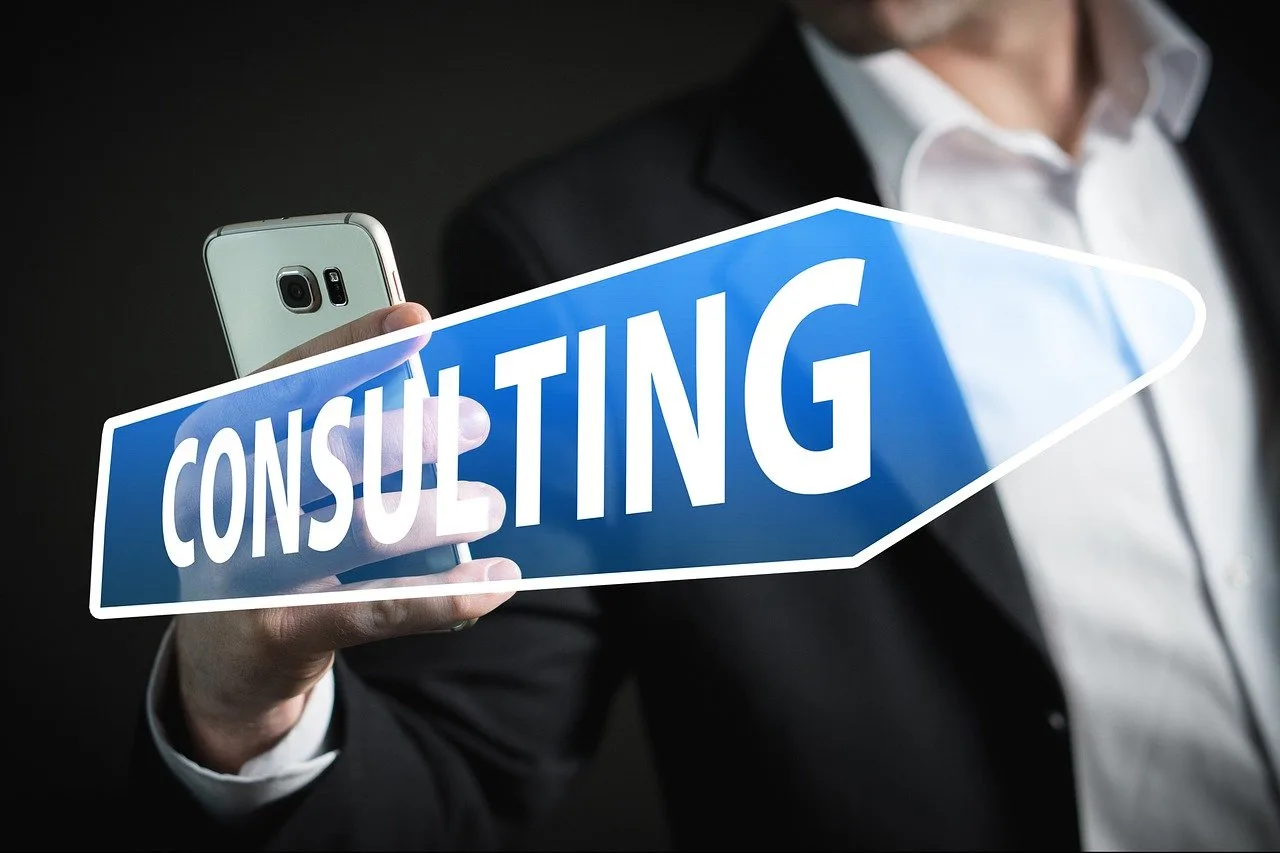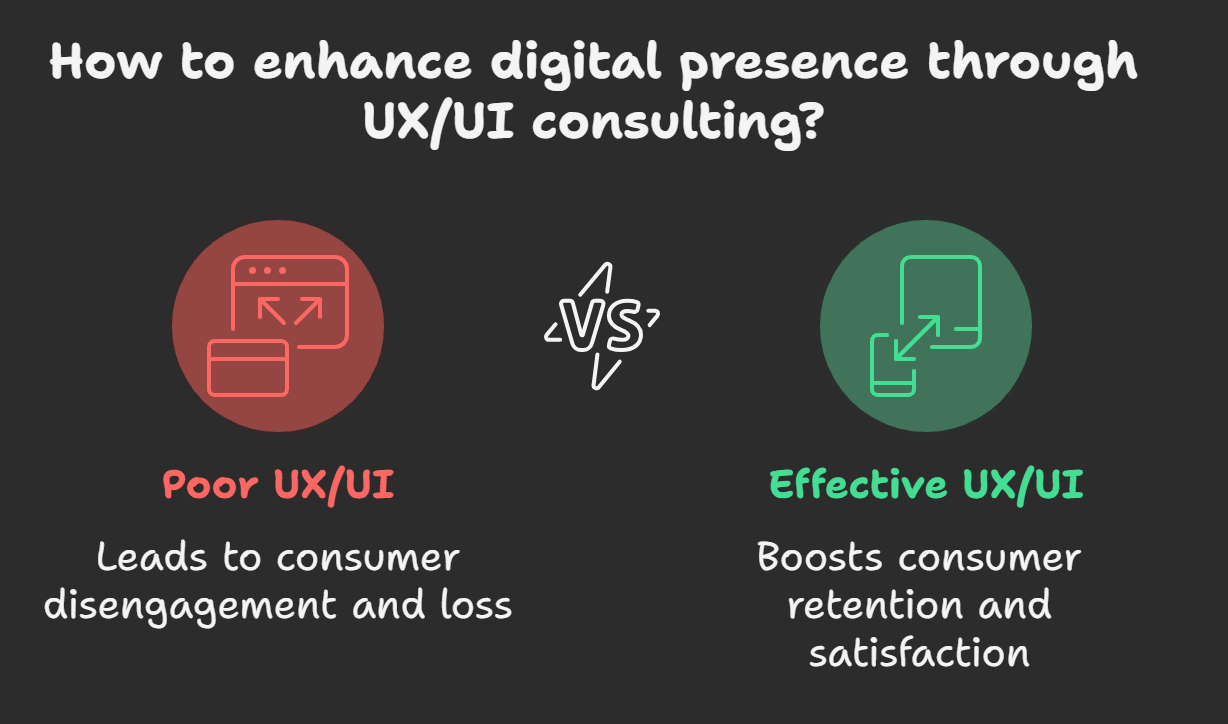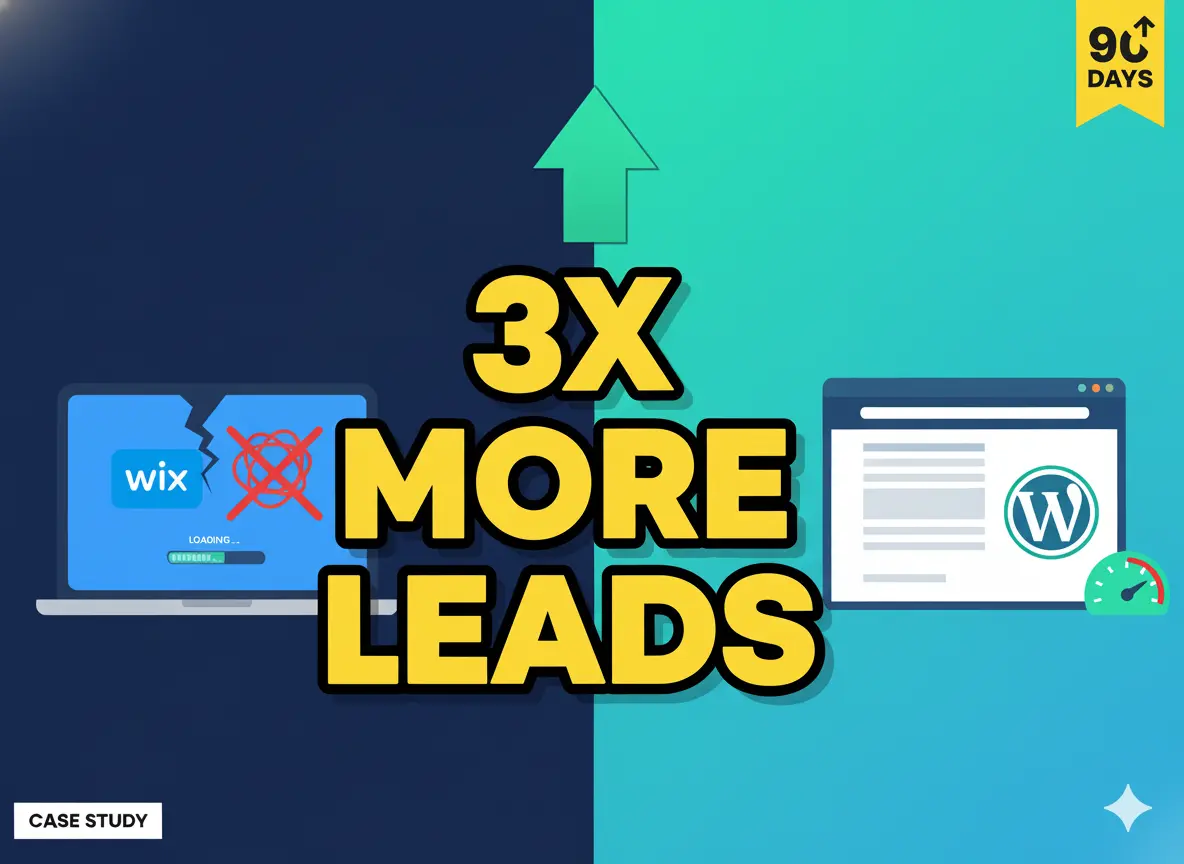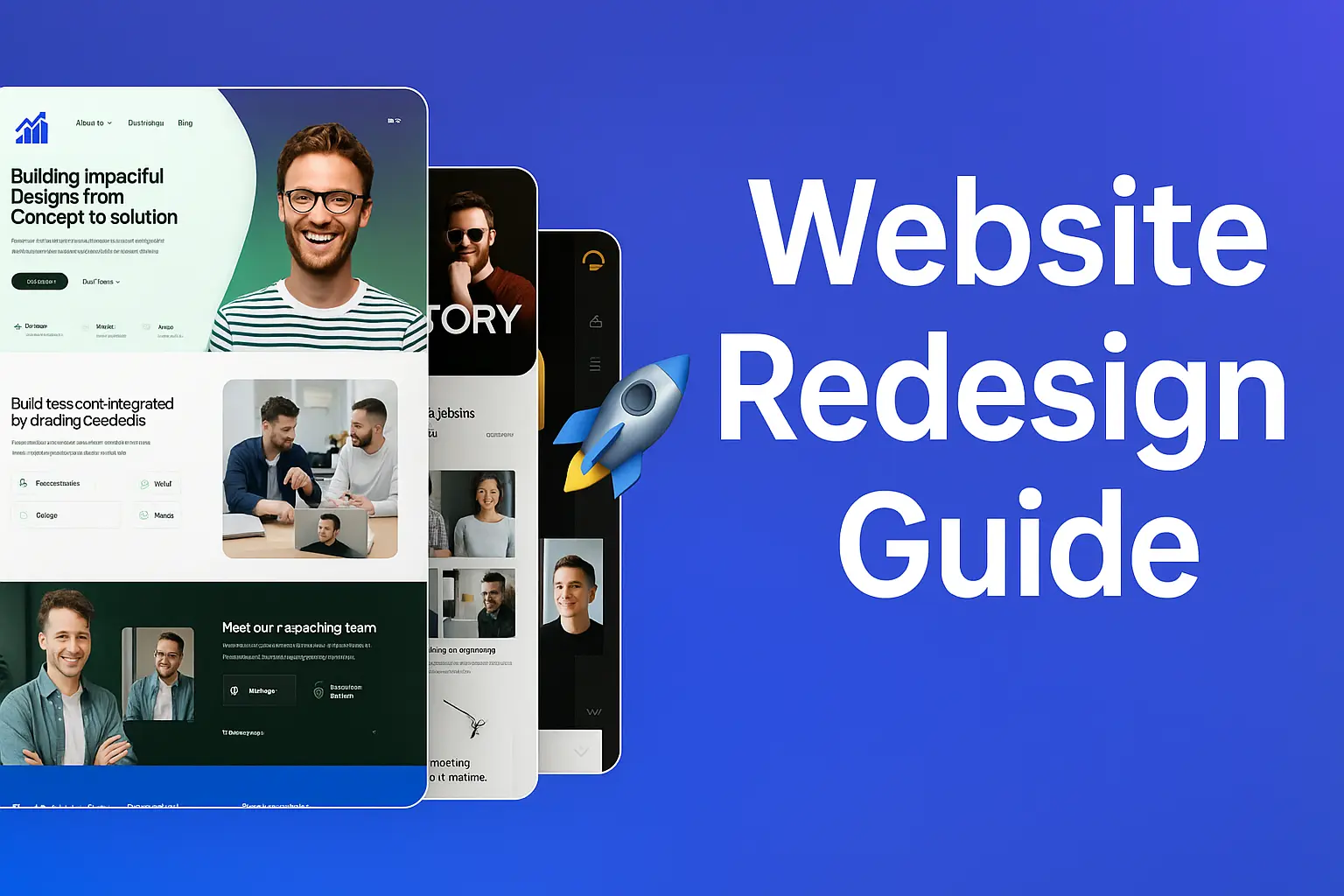
94% of first impressions are related to design, and the only way to make a first impression online is with the user experience. Did you know that 88% of online consumers are less likely to return after a bad experience? In today's competitive digital landscape, ensuring you're using UX/UI consulting services is no longer optional but necessary. Whether developing a new application, redesigning your website, or improving your product's usability, collaborating with an experienced UX/UI consultant can create the best impressions.
In this article, I'll explain everything you need to know about UX/UI consulting services, what they are, why they matter, and how to choose the right one for your business. Along the way, you'll discover key insights you can use to improve your brand's digital presence. Let's get started.
UX/UI Consulting Services: What They Are and Why They Matter

And let me tell you, I never knew what UX/UI consulting was all the time. When I first heard the term, it sounded like some techy wizardry for Silicon Valley hotshots. And UX/UI consulting isn’t just for the big-shots or anyone with a spare $10,000 it’s for anyone who wants to make their products more straightforward to use or enjoy. And believe me, after spending years in this space (and screwing up a ton on the way), I know a thing or two.
So, let’s break it down. UX (User Experience) and UI (User Interface) are interchangeable. Consider the two sides of the same coin. UX takes things a step further: what do users think and feel while they use your product? Does finding their way around your app feel smooth or make them want to toss their phone across the room? On the other hand, UI is concerned with the actual visuals: buttons, colors, layouts, all that good stuff. A UX/UI consultant guides businesses to nail both so customers don’t just tolerate using their platforms they genuinely enjoy it.
This is where things get personal. I worked with a startup with a great idea early in my career but no user experience focus. Their website was flashy, but finding anything was like navigating a maze with a blindfold on. We brought in a UX/UI consultant, and when they came in, boy, did they wake us up. They showed us heat maps of where users were clicking and no one could figure out how to sign up because the button blended into the background.
Takeaway: Even tiny changes like a button color can tow a highly profitable line.
Now, here’s the kicker, not all consultants are created equal. Others focus on UX research, analyzing surveys and interviews to discover what a user truly needs. Others gravitate toward UI design and nailing pixel-perfect interfaces that shine. The best of them do a little of each. If you are considering hiring one, ask yourself where do I need help, better understanding my audience? Or do I want someone that can make my designs look good?
One mistake I see people make all the time is using UX/UI consulting only for apps or websites. No, it goes way beyond that. Anything interactive can use solid UX/UI work, from Wi-Fi enabled toasters to kiosks at the airport. Heck, I once did consulting work for a coffee machine touch screen menu. Yup, you read that correctly a coffee machine. It turns out, paring down those options made mornings less harried for bleary-eyed caffeine addicts everywhere.
If you’re not ready to leap into UX/UI consulting, take baby steps. Perhaps do a quick usability test with friends or colleagues. Have them perform activities on your site or app, and see where they have trouble. It’s not perfect, but it will give you a feel of what these consultants do on a daily basis.
All UX/UI consulting is in the service of creating experiences that work for real people. Whether you’re developing a mobile app, redesigning your e-commerce platform, or building a software tool, you should invest in UX/UI. Because happy users, loyal customers, turn happy customers into advocates. And who doesn’t want that?
Reasons How UX/UI Consulting Services Are Worth The Investment

Let me tell you something, I used to think I could do everything alone. When I worked on my first digital products, I considered hiring a UX/UI consultant to throw money out the window. “How hard can it be?” I thought. It’s more complicated than it plays. And I did learn that lesson the hard way.
I ran this one project to launch an app to help small business owners. We coded, designed, and tested for months only to have users bail faster than guests at a dud party. Our navigation was clunky, our buttons confusing, and half our features made no sense to anyone outside our team. Things didn’t finally click until we brought in a UX/UI consultant. They completely redesigned the flow, simplified the interface, and just like that. User retention did 40X better.
The takeaway: Sometimes, we need a new pair of eyes and a ton of experience.
Why do you need to invest in UX/UI consulting services? Well, let’s break it down. For one, good design isn’t only about making things look nice it’s about solving problems. A good UX/UI consultant delves into your audience’s pain points. They ask questions such as, “Who are these users? What do they want? How do we simplify their lives?” Trust me, having someone who knows what they’re doing makes all the difference.
It's also a bit of a thing they will save you time and money in the long run. Yeah, I know what you're gonna say, "But consultants charge a fortune!" Yes, there's an initial investment, but here's the kicker, bad design is way more expensive. According to some statistics, I read I swear I double-checked them, every dollar invested in UX returns $10 to $100. Not too shabby, right? And fixing things post-launch? That's a nightmare. And you will spend twice as much trying to fix it later.
Oh, and let's not even talk about accessibility. One of my early regrets was neglecting that part. Once, we built a web page without thinking about people who use screen readers or who are color-blind. It was a big mistake. Our bounce rates skyrocketed because people couldn't use the site. A UX/UI consultant would have caught that right away. Accessibility isn't just a nice to have; it's vital if you want to reach a broader audience.
Now, let's talk ROI. Did you know companies high in UX outperform the S&P Index by almost 300%? Crazy, huh? If users like using your product, they stay longer, tell others about it, and convert better. Consultants guide you to nail those micro-interactions, the nitty-gritty of what keeps folks returning, such as hover effects, smooth transitions, or intuitive layouts. Those little adjustments accumulate quickly.
A word of warning, there is a massive variance between consultants. You know what they say about getting a second opinion. Seek out professionals who specialize in your industry. Request case studies or examples of previous work. If they're unable to articulate their process, run clearly. You deserve someone who understands your vision and has the chops to deliver it.
But yeah, investing in UX/UI consulting services is not just the right thing to do; it's essential. Whether you're designing an app, reworking a website, or starting up a new platform, these experts will guide you in creating something that works well for you and your users. Don't wait until you're drowning in user complaints to call one.
Top 5 Benefits of Working With a UX/UI Consultant
Back in the day, I thought hiring a UX/UI consultant was one of those fancy corporate buzzwords like "synergy" or "circle back." A couple of years back, I was developing this app idea that I knew would change lives. It had all the bells and whistles or so I thought. Now, fast forward six months, and what do you know? Nobody wanted it. It was comically awkward, and my clever design was as intuitive as folding a fitted sheet. That's when I humbled myself and enlisted a UX/UI consultant. That was the best decision ever.
To begin with, usability. You know how now and then you visit a website and, in the blink of an eye, it's like, "Where do I even click?" Yeah, don't be that guy. The most significant advantage of hiring a UX/UI expert is ensuring your product resembles nothing of a Rubik's Cube. They're dedicated to making interactions as simple as possible so people can do things without the urge to hurl their phones across the room. For example, one of my buttons, my consultant noted, appeared more decorative than an interactive element. Minor tweak and a vast difference.
These wizards also do well on the accessibility side. I'll be honest, though before I met my consultant, I didn't think much about screen readers or color-blind users. She walked me through what it meant to design for inclusivity, which expanded my audience and gave me serious warm fuzzies knowing I wasn't leaving anyone behind. Google has a soft spot for accessible sites. It does wonders for your SEO.
Now, here is where it gets juicy, decisions based on data. Consultants don’t make decisions based on instinct; they rely on numbers. Do you know those heat maps I mentioned before? It blew my mind to see exactly where users had been clicking (or not) in a visual way. We eventually scratched out a whole feature because no one cared about it, which saved us tons of dev hours and dollars.
Oh, and don’t forget branding. Your UI isn’t just colors and fonts in the correct order; it represents your company. With my consultant, we aligned our visuals to our mission; it felt cohesive. All at once, people weren’t just using the app, they were engaging with it. Kind of cool, right?
But in all honesty, the biggest win for me was speed. But without a clear direction, we’d just been spinning our wheels forever. The consultant also simplified our entire process wireframes, laid the copy, prototypes and reduced months of development down to literally days.
I’m not saying consultants are cheap; look. But trust me, the ROI pays off in every cent. If you’re still uncertain, test it out, perhaps pay someone for one project. See how it goes. You’ll probably wonder why you waited so long.
How to Select an Ideal UX/UI Consulting Service

However, finding an exemplary UX/UI consulting service is like dating. After a brief chat, you think you’ve met the one, but instead, they’re all talk and no trousers. I’ve been there more times than I care to count. When I started my company, I hired a consultant who assured me he could design a new face for our app. It didn’t occur. The designs were flashy, sure, but users couldn’t figure out how to use the thing. That’s when I understood you can’t just choose someone whose portfolio is pretty. There’s more to it.
So here’s what I learned from that disaster and a few since then. First of all, don’t jump to anything. However, take your time in vetting potential consultants. First, ask for their portfolio, but don’t leave it at that. Read closely about the projects they’ve done. Are they similar to yours? For instance, if your project is an e-commerce platform, hiring a specialist in medical software wouldn’t be the perfect match. It’s not rocket science, but believe me, people get this wrong all the time.
Once you’ve zeroed in on your list, schedule some interviews. Yes, treat it as an interview for a job. Ask them about their process. Or do they begin with user research? How do they conduct usability testing? A good consultant will have a methodology they can articulate to you. One guy I spoke to even talked me through his process everything from initial discovery sessions to post-launch tweaks. It was impressive, and frankly, it helped me make my decision.
But this is where it gets tricky. Not everyone is as transparent as that guy. Some consultants will toss around terms like “data-driven insights” or “intuitive interfaces,” but when you press them a little more, it’s all talk and no substance. Don’t fall for the fluff. Instead, request case studies or results that can be quantified from previous projects. Did they have higher conversion rates? Improve user retention? Those are the types of details that matter.
If you can’t understand each other, it will be a nightmare. I once had a consultant I worked with who spoke so much jargon that I felt I needed a translator. Ultimately, we decided to break up because it was simply too painful. So, notice how they explain things in your conversations. Can you follow along easily? Do they hear your concerns? These small signals are vast indicators of how smooth or painful the partnership will be.
Oh, also remember to check references. I know it sounds boring, but just let me explain. Speaking with past clients provides the inside info. Once, I skipped over this step and thought, “Eh, their website looks legit.” It turned out they were known for not meeting their deadlines.
Finally, budget counts, but don’t go cheap to save a buck. The money spent on good UX/UI consulting returns on investment immensely. Better design means happier users and more sales or sign-ups or your goal. And look, if cost is an issue, there are more than a few consultants with various arrangement packages available. Just make sure you’re getting what you’re paying for.
Finding the right UX/UI consultant is all about doing your homework. Ask the hard questions, go with your gut, and remember, flashy portfolios aren’t everything. In some cases, the best fit is the one who actually sits down and understands your vision.
How to Streamline Your UX/UI Consulting Process

When I first started in the UX/UI consulting world, I assumed it would be a lot more about aesthetics. There’s so much more to it than just painting a few colors on a screen or shuffling buttons around. It’s like baking a cake, the whole thing falls apart if you cut corners or don’t measure your ingredients correctly. And believe me; I’ve experienced plenty of cake failures.
We’ll take you through precisely what the UX/UI consulting process entails, step by step. I’ll share some lessons I’ve picked up because mistakes can be our most outstanding teachers right?
Step 1: Discovery Phase - Understanding You and Your Users
This is the beginning; honestly, it is the most crucial part. If you don’t know who your users are and what they need, you’re essentially building a house without a foundation. When I was early in my career, I learned the hard way that sometimes jumping straight into design because a client wanted fast results can come to haunt you. It turned out that the people they wanted to reach hated the result.
Takeaway: Always begin with discovery.
At this stage, consultants typically interview stakeholders, analyze existing data, and perhaps even deploy surveys or focus groups. One trick I swear by? Developing rich personas. These mini-profiles help keep everyone on the same page about who we’re designing for. I once worked with a fitness app startup, and our primary persona was “Samantha,” an overworked mom looking to fit in exercise between her busy schedule. Because they kept Samantha front and center, they attacked unnecessary features that would have crowded her out.
Discovering the fundamentals also includes analyzing competitors. Yes, that sounds snoozy, but it’s gold. Several years ago, I worked with a small e-commerce brand to reconfigure their checkout flow. Through competitor site analysis, we discovered that the little progress bar feature increased conversions by 15%. Not too shabby.
Step 2: Research & Analysis
Once you’ve mastered the basics, it’s time to dig in. Enter usability testing, observing real, live human beings interacting with your product can feel brutal at times seeing a user struggle to find the “Buy Now” button is not exactly an ego booster but it is one of the most valuable things you can do.
Pro tip: Record these during this concert music session. And there’s nothing worse than not remembering an essential insight because you were too busy taking notes. Also, leverage tools such as heat maps or session recording. They provide a peek behind the curtain of how users act when no one’s looking. They never do what you think they will.
Oh, and do not forget accessibility audits. Until one of my visually impaired testers told me how non-intuitive one of my designs was. Talk about humbling. Since then, I have ensured every project has been checked for WCAG compliance. This is not only good practice but the right thing to do.
Step 3: Design Phase - Where Everything Is Possible
Where we get to the juicy bit: wireframes, prototypes, and mockups. Wireframing is kinda like laying down the blueprint before building a house. It allows you to determine the layout without worrying about design details. Prototypes, as a rule, will enable you to experience interactions. Think of them as the scribbled draft of your masterwork.
Here’s a piece of advice, iterate early and often. Don’t wait until the end to share your work with stakeholders. Share drafts, seek feedback, and revise. Mark my words; it prevents headaches down the line. With one project, I procrastinated too long and did not showcase my designs, and there were massive changes the client wanted.
Top 5 Trends to Transform UX/UI Consulting in 2025
So you know, I have been in the design game for a while already so long enough to have seen trends come and go similar to fashion fàdes. But 2025 feels different. That means creating experiences, not just things that look nice anymore. Some of these trends, and trust me?
This was a project I worked on for a health app a few years ago. We spent weeks refining the color palette only to discover users had trouble navigating. That was my first big “aha” moment, aesthetics without function is a sports car without an engine. Fast forward to today, and you know what? Simplicity is back in vogue, but it’s a different kind now. There’s AI-powered interfaces everywhere. Like, everywhere. Chatbots are not clunky scripts anymore; they're intuitive and almost human. An acquaintance built an AI assistant on one of their client’s e-commerce websites. Their customer support calls fell by 40%! Wild, right?
Here’s where it gets even more remarkable, AR and VR are leaving the gaming world and entering the apps we use daily. Do you remember when Pokémon Go exploded? But what if you could use augmented reality to virtually try on furniture before purchasing? Yes, this is happening now, and UX/UI consultants are leading the way in determining how best to provide smooth interactions. I once worked with a retail brand to prototype an AR feature, and it was a joy to watch people interact with it. I think I felt like I was getting a taste of the future. The key takeaway? If immersive tech isn’t on your radar, you’re already lagging.
Now, let’s move on to accessibility. This one resonates, and I used to neglect it to be transparent. Some years ago, I designed a website that looked sharp but was not screen reader friendly. It turns out that more than 1 billion people around the world live with a disability of some kind. So inclusive design is not nice; it is critical. Look at some consultant in 2025 telling me that WCAG compliance and support for voice navigation and people with visual impairments is the main issue that we should be doubling down on. Tiny little adjustments like these can truly affect the user and Google, too,» he added.
Oh, and micro-interactions? That tiny animation or feedback cues? They’re huge now. What it feels like to like a post think about hitting like on a post on Instagram that little heart animation gives you a little endorphin boost, right? That’s intentional. Micro-interactions help retain users and add personality to your product. I recall adding some slight hover effects to a client’s dashboard, and their engagement metrics were suddenly going through the roof. Who knew that small details could pack so much punch?
Finally, personalization is going supernova. The era of one size fits all designs is long gone. Users expect personalized experiences from product recommendations to behavior-based dynamic layouts. Consultants are now propelling hyper-personalized solutions powered by machine learning, and honestly, it’s pretty mind-blowing.
So, what’s the bottom line? UX/UI consulting in 2025 isn’t about going with the flow; it’s about knowing what will happen next and solving actual problems. Watch for AI, AR/VR, accessibility, micro-interactions, and personalization. Believe me, keep yourself updated, as this will pay off very well.
Typical Issues Encountered by UX/UI Consultants
Being a UX/UI consultant is the most challenging job. Sure, it sounds glamorous designing clean-looking interfaces and prettying up experiences so users would go “wow.” But believe me, there’s a ton of behind-the-scenes madness you don’t witness. In the years that have passed, I’ve encountered my quota of roadblocks, and if I can spare just one person from tearing their hair out over these obstacles, that’d be a victory.
One of the biggest headaches? Striking a balance between client expectations and real users. We all know the drill: you're ready to make something intuitive and functional, but the client rolls in with demands that are not what you had in mind. Like, there was this one project I worked on where I was trying to build an e-commerce app. The client demanded we add flashy animations everywhere because it was cool. Animations reduced interactions, confused users, and made navigation clumsy. After weeks of A/B testing and presenting cold, complex data, they finally agreed to scale it back. Moral of the story, always have some user research to back up your decisions.
Then, there’s the inertia against change. Boy, do companies have a hard time with this one? I used to work with a team using the same faulty dashboard for years. When I mentioned toning it down a bit to make it more accessible, you’d have thought I asked them to burn their office equipment. They were attached to the old version so getting buy-in seemed impossible. Eventually, I prototyped both versions side-by-side and conducted hands-on test sessions with stakeholders. Observing firsthand how much faster the new design completed work? That did the trick. All of that means that sometimes showing beats tells.
Deadlines are the alarm clock of your morning essential, but can it ruin it. I once had a startup hire me with one week's notice to redesign their full mobile app because a big launch was coming. The only trouble was that they wanted it all done in three weeks. Wireframes, prototypes, usability tests, the works. I pulled late nights, drank enough coffee to light a small city and cut corners wherever I could. Ever since, I've been sure to push back on timelines that aren't realistic early.
And did I mention keeping up with trends? The tech world moves like a cheetah on roller skates. One day, everyone is all about minimalism; the following: 3D and bold colors are hot stuff. To stay relevant, we must keep learning over and over. I follow approximately five design blogs, attend several webinars when possible, and use tools like Figma or Adobe XD now and then. Even at that, I'll occasionally do what I recently did when I catch up on some trend I missed dark mode. And I feel like I'm playing catch-up.
Another barrier that is often neglected is accessibility. When I first started, I built a website excluding screen readers and color contrast ratios, a big mistake. Users with visual impairments struggled to navigate it and to be honest, I felt awful. Since then, I have made accessibility a non-negotiable part of every single project. Compliance checking is solved easily and quickly thanks to tools like WAVE or Stark.
A UX/UI consultant doesn't just make things look good it solves problems while juggling a million moving parts. If you're entering this realm, hold on to your seats. It's complicated, bittersweet, and full of lessons you won't find in a textbook.
End Note
UX/UI consulting services are no longer an option; you need them to be competitive in 2025 and beyond. The advantages are numerous, from increased user engagement to reduced revenue churn. So, if you're ready to take your digital experience to another level, it's time to enlist the help of an experienced UX/UI consultant.
The first step is to map it out today, see where your design strategy is at, how it can improve, and who you should talk to that can help you get there. Remember, good design isn't just about how it looks, it's about building valuable relationships with your users. And together, let's create something extraordinary!




.svg)
.svg)
.svg)
.svg)

%20(1).webp)










